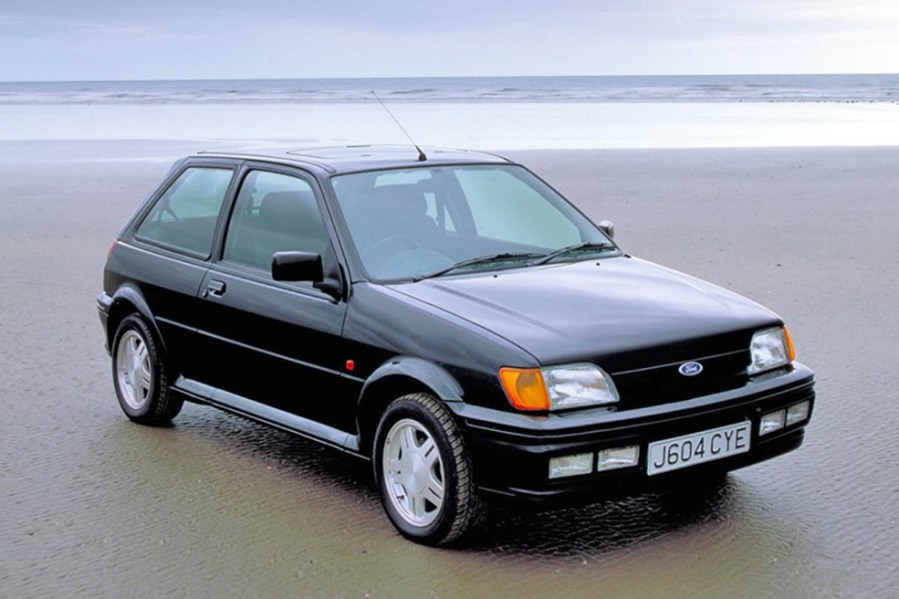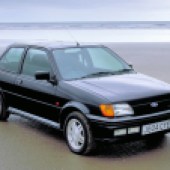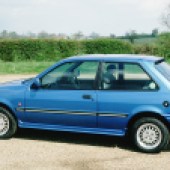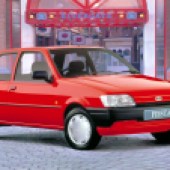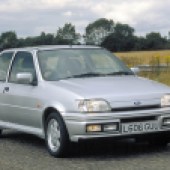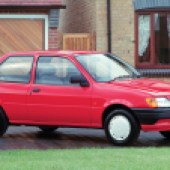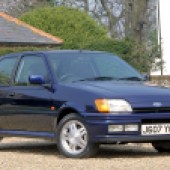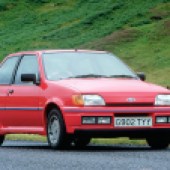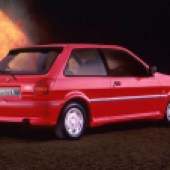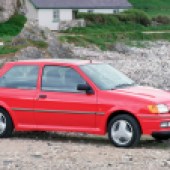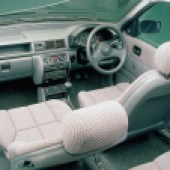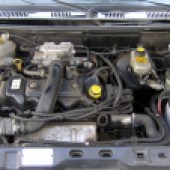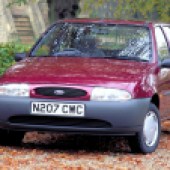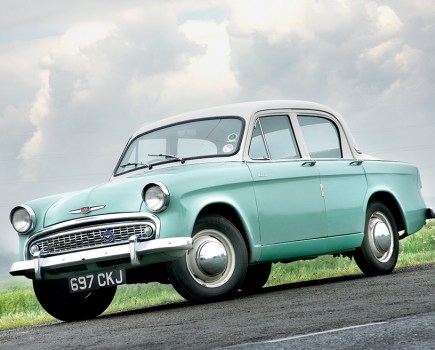The Ford Fiesta Mk3 was a great supermini that blossomed into the bestselling Mk4 of 1995. Today, it’s an affordable starter classic
Words: Dan Williamson
The original Ford Fiesta arrived in 1976 as a rival to the Fiat 127 before gradually piling on the pounds, from the big-bumpered facelift of 1983 (commonly known as the Mk2) into the third generation of 1989. By the end of the 1980s, superminis were all the rage – and it was the Ford Fiesta that ruled the roost alongside its largely French and Italian counterparts. On a completely fresh platform, the Mk3 Fiesta was refined with much-improved suspension, and a wheelbase extended by over six inches– making it finally available as a five-door hatch alongside the traditional three-door. The Fiesta could finally compete with the Fiat Uno and Peugeot 205 as a ‘grown up’ supermini.
The Fiesta Mk3 had a cabin that felt more spacious, although Ford stuck to cheap interior plastics and audaciously low-rent injection-moulded seats. Still, it was a refreshingly modern environment, and Ford’s tactic of giving just enough spec for the money attracted plenty of buyers. Entry-level Mk3s featured a 1.0 HCS engine with four-speed gearbox; it was painfully slow, yet less economical than the 1.1-litre version with a five-speed transmission. More impressively, the 1.8 diesel offered 70mpg, if you could stomach the coarseness and heavy steering. Higher specs brought better equipment and CVH engines – a 1.4 or (in the Fiesta S) carb-fed 1.6.
The XR2i arrived next, featuring a 1.6 CVH engine with electronic fuel-injection and colour-coded body kit, joined in 1990 by what classic Ford fans consider the best-ever Fiesta: the RS Turbo, which topped 129mph. Both offered front-drive fun, but couldn’t keep pace with the multi-valve engines of Japanese competition. Ford finally introduced its excellent Zetec 16-valve engine in 1992, powering the later XR2i and RS1800; numb steering meant neither could compete with superior-handling hot hatches, and so with crippling insurance making such cars an increasingly hard sell, overtly-sporting Fiestas were axed. Instead, a more subdued Si model was introduced in 1.4 or 1.6 Zetec guise.
The Fiesta was re-engineered in 1994, featuring a stiffer bodyshell, side-impact beams and revised suspension; today known as the Mk3.5, this revamp is recognised by slimmer door mirrors. The improvements carried over to the Fiesta Mk4 of October 1995; along with trim upgrades and a new fascia was a Yamaha-developed Zetec-SE in 1.25- or 1.4-litre form. Nobody moaned about the Mk4’s glum-looking face because the terrific powerplants were mated to a fantastic chassis.
Fiestas hit the top of the UK sales charts, and ranked high until replaced by the Mk5 of October 1999. Meanwhile, the Fiesta Mk3 continued as the Fiesta Classic (until 1997), plus the badge-engineered Mazda 121. What’s more, many of the earlier Fiesta’s underpinnings and oily bits continued into 21st century Fords. And it’s those similarities that make the Mk3 and Mk4 so usable. Modern practicalities, great fuel economy, cheap parts and unlimited upgradability mix with retro-cool appeal to make the Fiesta a perfect everyday classic.
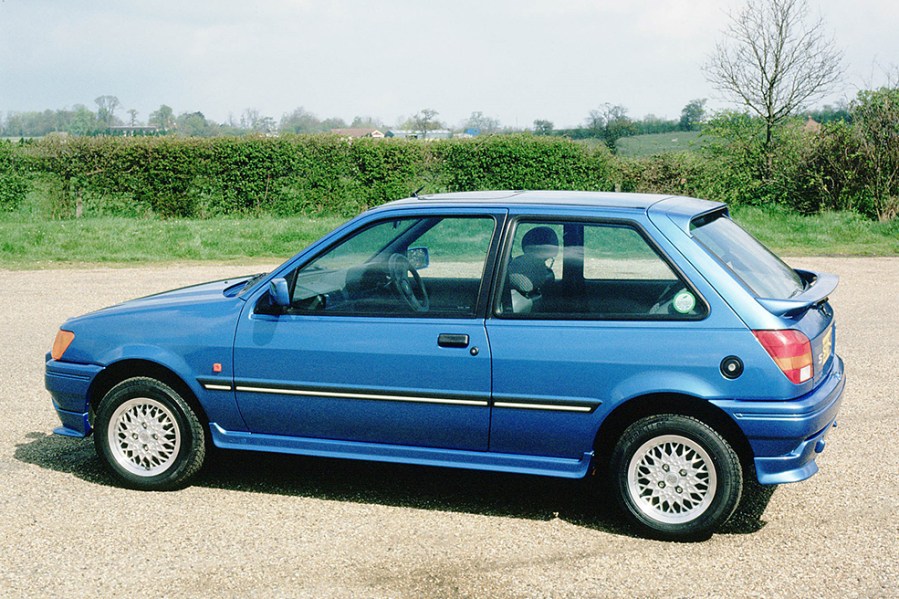
Ford Fiesta Mk3 values
The Fiesta Mk3 defies the trend for high-value classic Fords. Prices currently lag behind the average Blue Oval classic, and even the sportiest variants cost a fraction of their Mk1 and Mk2 equivalents. Take the XR2i, for example: a usable example can be had for well under £5000, whereas a Mk1 XR2 will set you back around three times as much. The RS Turbo follows a similar pattern, commanding little more than half the price of comparable Escorts. Be warned, though: fakes and replicas are widespread.
At the other end of the spectrum, entry-level Mk3s can be acquired for less, though values are starting to creep up for the very best examples. Around £2000 should secure a tidy Fiesta with reasonable specification and practicality (such as a 1.4 Ghia), with prices rising for lower mileage and superior condition. A project can be had for circa-£500, but consider carefully the potential for spiralling costs on a car that might only be worth £2000-£3000 when you’re done.
Insurance Costs
1990 Ford Fiesta Mk3 XR2i, £7000 value
Example quote: £113.50 or £131.50 with Agreed Value.
Quotation supplied by Lancaster Insurance. Tel: 01480 400761
Quote based on a 45-year-old marketing manager, access to another car, no claims or convictions, club member, 3000 miles per year, no modifications, living in SP2 0HL. Disclaimer: Subject to underwriting criteria. An additional charge may be payable. Authorised and regulated by the Financial Conduct Authority.
Bodywork
Rust is the perennial foe of older Fords, and the Fiesta Mk3 is no exception. While the Mk3.5 and Mk4 Fiestas are less prone to corrosion than the Mk3, any example can disintegrate if it hasn’t been properly maintained over the years.
Superficial rust is easy to spot around the rear wheel arches, rear quarters (where they meet the tail panel or rear lights), front wings, tailgate, and door frames, especially beneath the rubber seals. The Mk3 features a locking fuel cap, around which the steel often rots completely, taking the pipework beneath with it; later models have a fuel flap, which is less susceptible to decay.
Inspect the engine bay beneath the fuse box (itself prone to causing issues from corrosion), the battery tray, inner wings near the bulkhead, and the crossmember. Look for rust around the windscreen scuttle, A-pillars, and outer sills.
Check the inner sills and front floor pan, and don’t hesitate to lift the carpets to examine the seat mountings. If the carpet is damp, suspect leaks from the bulkhead or sunroof, and expect corrosion in the floor. Take a thorough look underneath, checking the boot floor, rear suspension turrets, and outer valance.
Replacement body panels are available, so restoration isn’t impossible – though it’s only financially viable on a sporty XR or RS. In that case, ensure the body kit is complete, as skirts and wheel-arch extensions are increasingly hard to find.
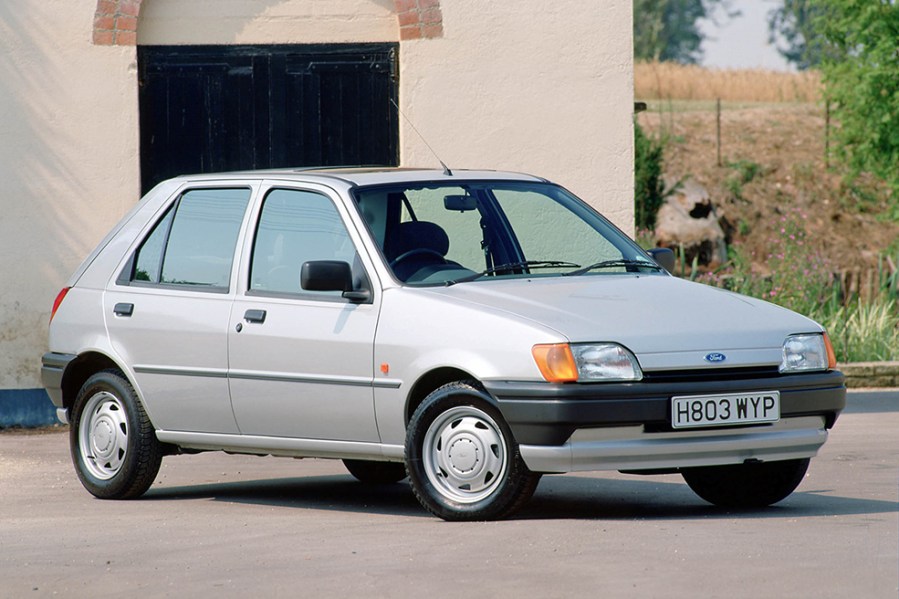
Engine and transmission
Ford Fiesta engines span from ancient relics to modern units, so your choice of Mk3 Fiesta has a huge effect on refinement, performance and reliability. Entry-level Mk3s came with an HCS (High Compression Swirl) engine – a spin-off of the Valencia, itself a budget evolution of the old Crossflow – available in 999cc, 1118cc or 1297cc forms. All were rattly, unrefined and unlikely to survive high mileages. By now, an HCS is likely worn out, probably smoking, losing oil and knocking from the bottom end; common issues include worn valve stem oil seals and piston rings.
Excessive tapping from an HCS suggests the valve clearances need adjusting (straightforward for a competent DIYer), or that new cam followers or valves are needed. This engine soldiered on in the Ford Ka until 2002, so replacement parts and rebuild components remain cheap and easy to source.
CVH engines appeared in 1392cc and 1596cc forms, the latter in carburettor-fed, fuel-injected and turbocharged variants. While more sophisticated (overhead-cam) than the HCS, it was still harsh and prone to wear from around 60,000 miles. Noisy tappets and camshaft rattle are typical; listen for heavier growling from the crank, and check it isn’t drawing from the oil filler – often caused by air bypassing the piston rings, though a blocked breather can also be to blame. Make sure the cambelt has been replaced recently; if not, it should be swapped immediately.
Diesel Fiestas used Ford’s 1753cc Endura-D, a rugged unit but painfully slow and heavy to steer. They can run for miles, gradually becoming slower, noisier and smokier. If it won’t run, struggles to start or misfires badly, move on to a different Fiesta.
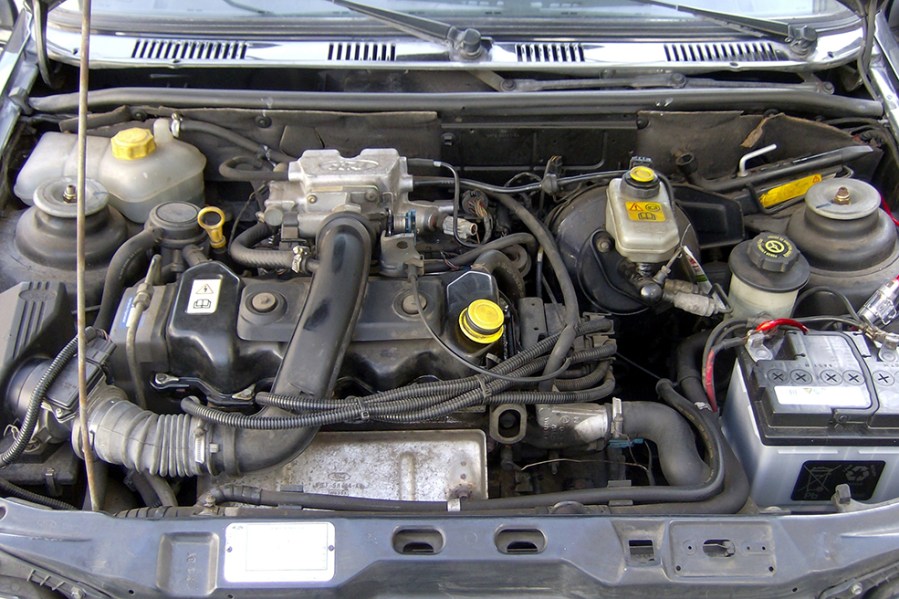
Zetec and Zetec SE-engined models are far superior, being quieter, smoother and more economical. They can easily cover very high mileage without trouble, provided oil changes and cambelt replacements are carried out on schedule. Major failures are rare, but avoid any car showing blue exhaust smoke or an overly noisy bottom end; if the oil has been neglected or run low, serious damage may have occurred. Check that the engine revs freely without smoking once warmed up. More commonly, issues include stalling, uneven idling and fluctuating revs – usually caused by sensors, the idle speed control valve, or the coil pack, depending on the model. Parts are inexpensive, though diagnostics can take time.
Early Mk3 1.0s (and some 1.1s) came with a BC four-speed manual gearbox, which is best avoided. Fortunately, it’s simple to swap for the five-speed BC5 used in most Mk3s. A revised version, known as the iB5, appeared in the Mk4. Both are plentiful, reasonably reliable and cheap to replace or repair.
The BC5’s gearchange tends to feel vague, but the iB5 should be smooth. Any sloppiness points to a worn linkage, while crunching between gears – especially second to third – usually indicates worn synchromesh, requiring a rebuild or replacement gearbox. Difficulty selecting gears may result from broken teeth on the (plastic) clutch self-adjusting ratchet; listen for clicks when lifting the pedal. Rattling at idle that disappears when pressing the clutch usually signals a faulty release bearing. Clutch failure is common, so check for a low biting point and test for slip by setting off in second gear to see if the engine stalls.
Avoid any grumbling or whining from the transmission, particularly in fifth gear or from the driveshafts; a non-functioning speedometer drive is also a concern. Juddering on take-off may indicate a worn gearbox mount, while clicking at full lock usually points to a worn CV joint. Both are straightforward to fix. The CTX continuously variable automatic was offered on the Fiesta 1.1, 1.3 and 1.4, but it’s awkward to use and prone to oil leaks. Typically specified by older buyers on high-spec models, surviving examples are quite common; the best solution is usually to replace it with a five-speed manual.
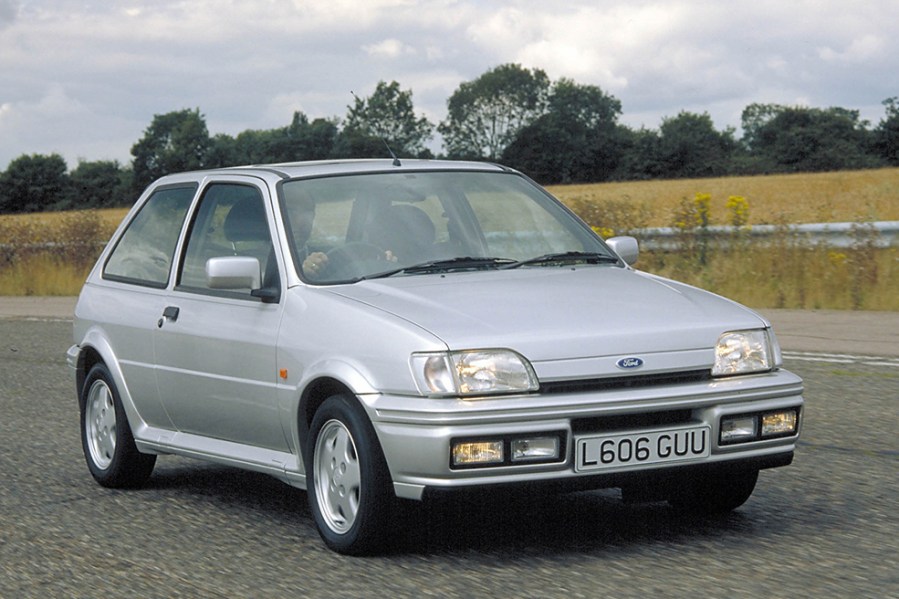
Suspension, steering and brakes
Fiesta Mk3s were criticised for their rather stodgy handling, but the Mk3.5 saw improvements, and the Mk4 gained a reputation for being genuinely enjoyable to drive; in fact, the Mk4’s platform later underpinned the highly praised Ford Puma of 1997. All models are straightforward to work on, with parts readily and cheaply available.
Worn springs and dampers lead to a squishy feel on the road, while fatigued bushes cause wandering – also a sign of play in the steering rack or track rod ends. If the steering wheel can be lifted, the column bush is likely at fault. Listen for front-end clunks, typically due to broken drop links or lower suspension arms; check the strut top mounts and watch for snapped springs. Fiestas are hard on wheel bearings, so listen for rumbling and give the wheels a shake.
Judder through the brake pedal is often caused by worn or overheated front discs and pads, but it could also indicate a sticking caliper – particularly if the car pulls to one side. All are inexpensive and easy to replace. Rear drums frequently seize, or the handbrake mechanism stops working (often due to leaking wheel cylinders), and rear bias valves can stick, causing excessive braking at one end. ABS, where fitted, can be troublesome, so ensure the dashboard light illuminates with the ignition and goes out after a few seconds.
Many later examples were fitted with power-assisted steering, which makes town driving far easier and is definitely worth seeking out.
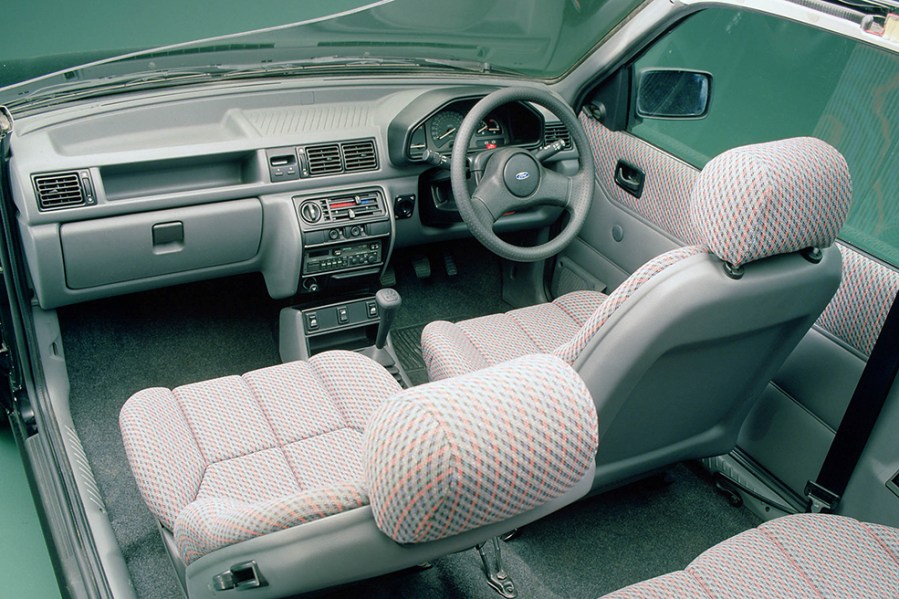
Interior and trim
Better than a Mk2 but still dominated by plastics, the Fiesta Mk3’s interior – and even the much-improved fascia of the Mk4 – is likely to look tired if the car has covered significant mileage. Even a lightly used example may rattle from the dashboard and trim panels, while many types of fabric seats stain easily. Bolsters wear through, seat bases sag, and door cards can droop. Although millions of Fiestas were produced, the wide range of trim levels can make finding pristine replacements for your specific car quite difficult.
Check that all electrical components (where fitted) function correctly: electric windows, central locking, and boot release motors and connections can become sticky or worn. Test the heater carefully – it should not just blow hot air but should be adjustable. Indicators that fail to cancel usually point to a faulty column stalk, while a fog-light switch that glows with the ignition on (in sportier models) indicates a wiring loom issue.
Remove the fusebox and inspect the wiring, which is prone to faults, ensuring it hasn’t been poorly repaired. Electrical problems are common, often due to corroded connectors or bad earths. If the car has a sunroof, check for leaks and any staining on the headlining and carpets.
Ford Fiesta Mk3: our verdict
The Ford Fiesta Mk3 and its Mk4 successor may seem too modern for many classic car aficionados, yet they serve as perfectly usable classics in much the same way as the Minis and Morris Minors of yesteryear. A Fiesta is an ideal starter classic: affordable, accessible, simple to work on and – dare we say it – prone to nearly every kind of hiccup, offering the DIY enthusiast endless opportunities to hone their spannering skills.
As ever, the Blue Oval badge scores extra points for the style-conscious, and any sporting Ford can be tuned for exceptional driver appeal – not to mention turning heads at car shows, all while offering more than a return on a pension scheme. Naturally, an XR or RS is the most sought-after, and at current values carries genuine investment potential.
That said, we would personally spend our money on a late-model XR2i 16-valve, thanks to its smooth and dependable Zetec engine, or a Mk3.5 Si 1.6, which featured quirky wing-backed seats and power steering – a major advantage for an everyday starter classic.
MODEL TIMELINE
1989
Mk3 Fiesta introduced in February, UK sales begin in April. Fiesta S later introduced with 1.4-litre fuel-injected or 1.6-litre carburetted engines. XR2i launched in October with 105bhp 8-valve CVH engine.
1990
Fiesta RS Turbo introduced, based on XR2i and offering 133bhp from boosted CVH, as well as distinctive ‘tri-spoke’ wheels. Fiesta Van gains 1.4-litre catalysed petrol engine.
1991
Fiesta-derived van, the Courier, launched. 1.6S Fiesta produced until August.
1992
XR2i updated with 16-valve Zetec engine, RS Turbo replaced by insurance-friendly RS1800 with 1.8-litre Zetec engine.
1993
Facelift bring structural and safety improvements, as well as new door mirrors and wheels trims and an immobiliser on petrol models.
1994
XR2i name dropped, replaced by Si with either 1.4-litre CVH-PTE or 1.6-litre Zetec.
1995
Mk3 Fiesta sold alongside new Mk4 as ‘Fiesta Classic’. Production continues in Valencia, Spain.
1997
Production of Fiesta Classic ceases.

